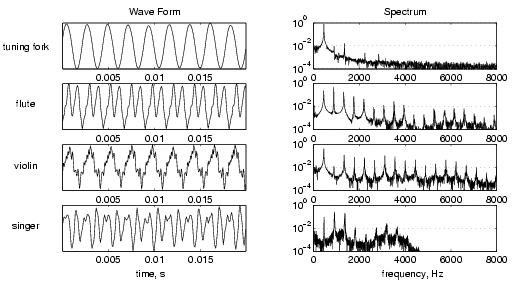This is a combined entry post for the Information Finding Championship and the Educator Showdown

So, you've figured out how to hold the bow and how to hold the violin. You are also out of the screeching cat phase of learning the violin and on your way to playing concerts without people throwing rotten food at you! Perhaps an upgrade to cooked food?
Surprisingly enough, on the bow side of things, there are only 4 things that affect your sound on the bow side of things! It is like playing with sliders, how hard could this be!
Pressure
Violinists like to avoid the word "pressure" as it has negative connotations with squashing or pressing the sound and the string, and so they tend to use words like weight instead. This is perhaps the least subtle of the sliders and it's main effect to your sound is in sheer volume change.
Basically the more weight that you channel into the string via the bow the louder the sound tends to be, conversely, the less weight you use the softer. Think of this like the amount of air that you that you use to power your voice when talking/shouting/screaming/whispering. If you are going for something loud then you blast out with lots of air volume, for softer voices, you use much less air.
Anyway, just as with all things, there are limits. The string can only support so much weight before it cracks it's sound (basically jumping overtones and not being able to hold the fundamental). This maximum weight depends on all the other slider settings! Likewise, there is a minimum weight where you aren't making any sound at all. If you aren't touching the string, don't expect a sound!
Speed
How fast are you moving the bow, is it speeding along like the roadrunner? or taking it slow and easy like a turtle? This is the second most important slider in our toolkit.
Think of this as the slider that acts like the focussing of a flashlight. You can switch the beam to be super foccussed into a small dot or spread our widely. The slower you go, the more foccussed the sound is whilst at the faster speeds the sound gets more diffuse. You can try this out with your voice. When you sigh, the air in your breath is fast and this leads to a diffuse-like sound. Do the same thing, but try to slow the air with your throat. You will find you can't sigh, but instead the "sigh" focusses into a "real" sound.
Tilt
There are about 200 horse hairs in a roughly 1 cm wide strip of bow, less in a baroque bow (but in a thinner strip). So, in priciple you can have between 1 and 200 hairs contributing to the production of your sound. The easiest way to affect this slider is to change the tilt of the bow. When your bow hair is flat against the string, then you have the maximum amount of contributors. When your hair is flat, then you have the least.
The easiest way to think of this is with a football chant! If you have only one person doing it, it sounds thin, and pretty lame (although if that is the sound you want, then this is good!). If you have a group of 200 people doing the same thing, the sound is pretty fat (again, if this is the sound you want, great!).
Point of Contact
This is a tricky slider to describe, as it affects the "timbre" or the way the instrument sounds. Without going to deep into the physics of it Fourier transform, the "timbre" or the quality of the sound is based upon the mix of the fundamental and overtones that your ear hears. This is why a flute sounds different to a piano, or a violin sounds different to a tuba, or even two people sound different to each other even if they are playing the exact same note. The pitch that you hear is the fundamental frequency, the "type" of sound is the mix of the overtones that you are hearing.
This slider is a subtle one again, as it affects the type of sound rather than a variable like volume. The closer you are to the "bridge" of the violin (the little wood bit that helps hold the strings up!), the more nasal and "nasty" the sound is. The further away you get, the more "fluffy" it becomes. This following video helps to hear the "nasal" quality.
Mixing it up
Now you are familiar with the sliders needed to change the sound and tone of your violin!
The first tricky part is that altering one slider really messes around with the others and they don't remain constant as you move around the bow and as the music evolves in time. So the challenge is to keep shifting the sliders from second to second (or even shorter times!) to keep the sound being the one that you want to be speaking at the moment.
The second tricky part is that the way to pull these levers are all done in in real time by your very fallible human hand. Eventually you will be able to know the sound that you want, and then "feel" how your bow interacts with the string to create it. However, this feeling can change in different conditions, a shot of adrenaline via nervousness can really mess with your perceptions!
But in principle, you are ready to fine tune your sound to pull at the heartstrings of your audience!
Is affecting the sliders difficult
Not really, it only requires years and years of practice and dedicated experimentation, combined with the skill and courage to use it in public performance. But on the other hand, once it is part of your playing, it is as natural as changing the type of voice you use. Just like when you are soothing a baby with a gentle whisper or scolding a naughty toddler, you don't need to think about the many variables that change when you change your tone of voice.
So, when you next see a performance, think of the amount of time and dedication that the musicians have spent to ingrain this "naturalness"! Maybe even consider throwing some edible, warm food instead of that empty beer bottle!

Referral links
Mene, Investment jewellery (5 dollars credit just for making the account).
Humble Bundle Monthly, PC games package every month!
Minnowbooster Bonus for the new account maker as well!
CryptoBNB AirBNB in the crypto world!
Coinbase, the biggest fiat on and off ramp.
Binance, the biggest crypto exchange.
Mannabase, Universal income in the blockchain
Cryptopia, Lots of lesser known altcoins.
HitBTC Even more Altcoins!

Horizontal Rulers by cryptosharon
Team Australia footer by bearone

The classical music community at #classical-music and Discord.
Follow our community accounts @classical-music and @classical-radio.
Follow our curation trail (classical-radio) at SteemAuto
Community Logo by ivan.atman



.jpg)
.jpg)

.jpg)
.png)
